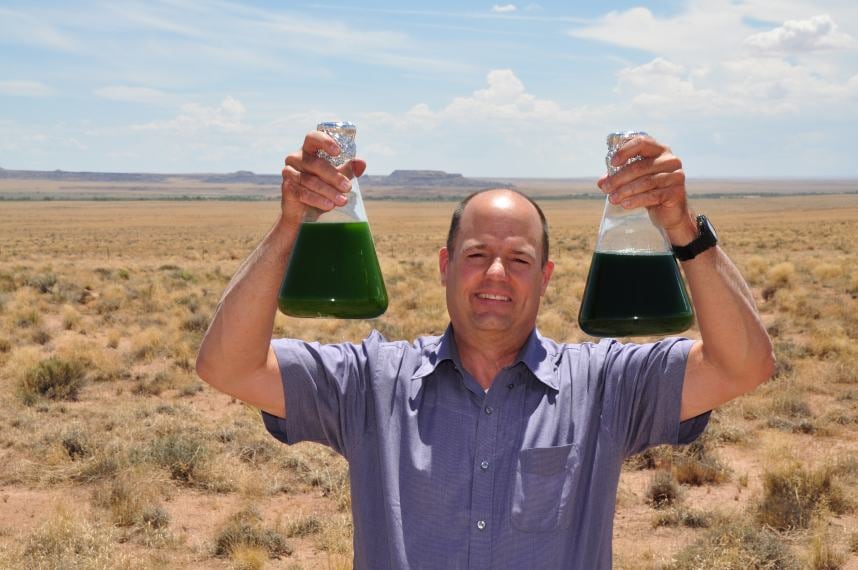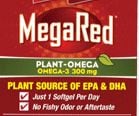While DSM has already proved it can make money in algal omega-3s, it is still too early to say whether new market entrants such as Aurora Algae, BioProcess Algae and Algae Biosciences can do the same.
And while they are all edging closer to market, it could be some time before clear winners and losers emerge from the new wave of players, say bosses at all three firms, who say the cost and complexity of producing algal omega-3s at scale is not to be underestimated, and predict a market “shakeout” as weaker players are forced to exit.
AlgaeBio: We plan to be in full production in the near future

So where do they stand today?
AlgaeBio, which grows algae in ‘pristine’ saline groundwater from a site in Arizona where an underground salt dome interacts with an underground sea, says it has now overcome “unexpected hurdles” and is “making progress towards the production of product for GHT [which is developing supplements under the ‘Omega-3 Origins’ brand containing AlgaeBio’s oils]".
He adds: “We plan to be in full production in the near future.”
Aurora Algae, which is currently producing EPA-rich algal oil from a large pilot facility in Karratha, Western Australia, remains on schedule to break ground on a commercial scale site in 2014 it claims will dwarf rivals’ facilities. Click here for more details.
Finally, BioProcess Algae, which grows algae on biofilms fed with waste heat and carbon dioxide from co-located ethanol plants, says it expects to triple production capacity at its facility in Shenandoah, Iowa, later this year, and will have products going into commercial launch at the same time.
DSM: It has taken us a long time to get where we are and perfect our process
But what does market leader DSM think about these firms snapping at its heels? And can it keep its first mover advantage?
“We expect to see many new entrants to this market as the potential of algae as a resource is still largely untapped”, Chris Lindsay, director of business development, Nutritional Lipids at DSM, told NutraIngredients-USA.
“But we have set the benchmark for quality and reliability and we have significant scale.
“It has also taken us a long time to get where we are and perfect the process. We did look at other strains of algae and other production methods, and there is a reason why we chose the heterotrophic process [in which algae is grown without sunlight in big vats to which nutrients are added].”
DSM’s algal omega business is ‘still growing nicely’
Meanwhile, DSM’s algal omega business is still “continuing to grow nicely”, he claims, with DSM’s global network providing access to new customers and markets for its flagship Life’sDHA ingredient and innovative new products such as EPA/DHA combo Life’sOmega and a freezable DHA emulsion for acidic-based shelf stable drinks generating new opportunities.
And while supplying DHA to the infant formula market still accounts for the “lion’s share” of its algal omega business, DSM is steadily growing the proportion of sales generated by other food and beverage applications and the dietary supplements market, he says.
“One sweet spot for algal DHA is in the pre-natal supplements market, which is well-aligned with the infant formula market, where we have very solid credentials.
“But there is also a growing market opportunity in brain health, which is being aligned in the literature with DHA and also aligns with changing consumer demographics.”
We are adjusting our manufacturing process to increase the percentage of omega-3s in Life’sOmega from 40% to 50%.

Meanwhile, sales of Life’sOmega (the ‘fishless fish oil’) are also gaining momentum as firms seek a vegetarian alternative to fish oil with heart, brain and eye benefits, he says.
Life’sOmega, which contains DHA and EPA in a 2:1 ratio, is used in a range of products including Schiff Nutrition’s Plant Omega supplements (pictured left), Nordic Naturals’ algal omega range, Pharmavite’s vegetarian omega-3 softgels and Darigold’s Omega-3 2% milk, says Lindsay.
“We have a process improvement team to improve fermentation conditions and downstream processing and we are adjusting our manufacturing process to increase the percentage of total omega-3s in the oil from 40% to 50%, which we think is pretty meaningful.
“We will be launching the new higher concentration product later this year.”
We have the largest algal culture collection in the market
So what’s next?
Lindsay won’t say whether DSM is developing a high potency EPA product to compete with the likes of Aurora Algae, but stresses that DSM has the “largest algal culture collection in the market” and access to cutting edge purification and concentration technology via the Ocean Nutrition acquisition that gives it a real competitive advantage.
As awareness of RDIs for omega-3s grows, the ability to provide more concentrated oils will become increasingly important, he adds, as consumers look for ever smaller capsules that deliver more meaningful doses.
There are not enough fish in the sea to meet demand
But where will algae fit into the overall omega-3 market longer-term, and will the price differential between algal omegas and fish oil close over time?
Firms will continue to pay a premium for algal omegas in future, predicts Lindsay, although the price gap with fish oil will narrow, he predicts.
“The market pull is there and the science is there and if people are going to get anywhere close to getting their daily recommended intakes, there are not enough fish in the sea to meet that demand.”
